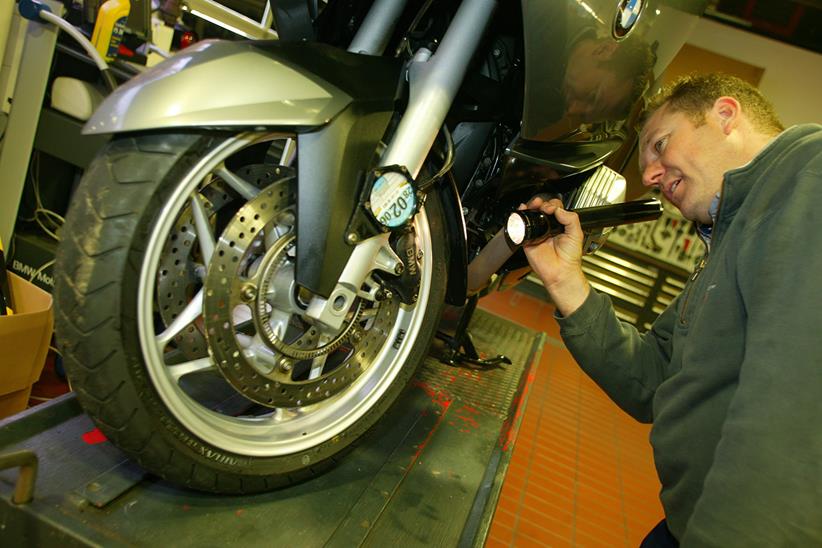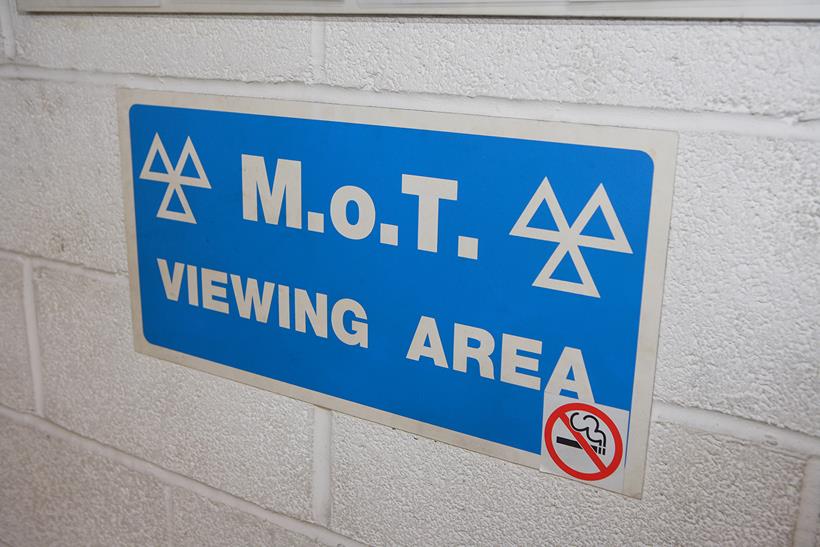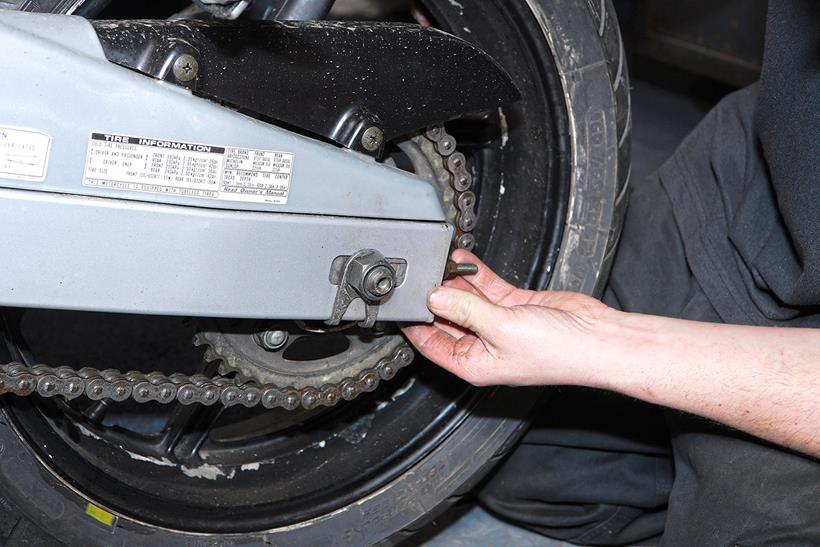Proposed changes to MoT testing prompt online petition

A number of motoring bodies have launched a petition in an attempt to stop the Government’s proposed plans to extend the first MoT of a vehicle to four years.
The Department for Transport announced the plans on Wednesday, 18 January and is said to be born out of the advancements in vehicle technology and the rise in electric and hybrid cars. The DfT is now seeking the views of others on the proposals until 11:59pm on Tuesday, 28 February.
At the time of writing, the petition has gained 1225 signatures, with 10,000 required for an official Government response. Its creators say that extending the first test would be: “dangerous, expensive, damaging and unnecessary.”

They continued: “The Government has considered extending the period before a new vehicle needs its first MoT several times in recent years and abandoned plans every time after common-sense arguments from industry bodies and consumers alike.”
Despite the consultation period ending at the end of February, the petition will continue to run until 23 July of this year and is backed by the Independent Garage Association (IGA), Garage Equipment Association (GEA), National Franchised Dealers Association (NFDA), Scottish Motor Trade Association (SMTA) and National Tyre Distributors Association (NTDA).
Alongside the extension of the first test, the proposals also speak about replacing annual testing with biennial examinations, as well as looking at the noise a bike or car makes and considering whether electric vehicle batteries should be safety checked over time.

RAC head of roads policy Nicholas Lyes said: “While we’re not opposed to delaying a new vehicle’s first MoT, we believe there should be a requirement for particularly high mileage vehicles to be tested sooner.
“If the Government is looking to improve the MOT, now is the ideal time to take into account how much a vehicle is driven, alongside the number of years it’s been on the road.”
For more on the petition, or to sign it head to the Parliament petition website.
MoT switch is a false economy: Plans for biennial MoT testing could leave dangerous vehicles on the road
First published 20 January 2023 by Jordan Gibbons

As the cost-of-living crisis deepens further, politicians across the spectrum have been offering up ideas for ways the public could save money.
On Wednesday, 18 January 2023, the Department for Transport announced a consultation into the future of MoT testing – suggesting the first check up could move to four years, with biennial tests thereafter. But should us bikers, aka ‘vulnerable road users’ be concerned? We took a look.
The MoT has been part of motoring life for over 60 years. To begin with it was voluntary, before becoming compulsory – but only every ten years.

Now, every modern vehicle on the road must be inspected every year after its third birthday. But how effective are they? Helpfully, the Driver and Vehicle Standards Agency (DVSA) keeps the stats.
In the most up to date figures (July-September 2022) a total of 288,266 bikes took an MoT with just under 15% failing the first time. Some of those could be repaired – think brake pad replacement or new tyres – with the final fail rate ending up at just under 9%.
For cars, it’s quite a lot worse. Of 8,525,803 tests taken, 1,876,146 failed the first time; that’s 28%. Not many were repaired either as the final failure rate remained 22%. More worrying, 635,216 tests are recorded as ‘failed with at least one dangerous item’. In short, the MoT seems to catch a lot of dodgy cars.

Critics of the scheme point to the fact that once you leave the MoT station, the test is effectively worthless noting that just because a vehicle passed the test then, doesn’t mean it will be fit to drive for 12 months. But is that reason enough to extend the gap between tests?
“The purpose of an MoT is to ensure vehicles meet a basic level of safety for driving on our roads,” says Nicholas Lyes, Head of Policy at the RAC. “Shifting it from annually to every two years would see a dramatic increase in the number of unroadworthy vehicles and could make our roads far less safe.”
It seems we’re all aware of this; the RAC surveyed their members and found that 55% thought switching to two-year MoTs is a bad idea and 98% thought it would result in greater numbers of unsafe vehicles on the road. But are there any stats to back this up?

Given the age of the MoT it’s hard to find reliable stats – more people died on the roads in the 1960s because cars were simply less safe than now but if we look across the channel, we can get a better idea.
Until January this year, France has not had compulsory inspection for motorcycles – in fact, bikers over there have been fighting against them for years and only now have lost in the high court. Their most recent stats show that around 0.5% of motorcycle accidents are linked to a mechanical problem.
OK, so maybe extending MoTs for motorcycles wouldn’t be a bad thing, but what about cars? When France introduced the same test for cars in the 1990s (again very late), 17% of accidents were related to a technical fault. In the UK, that same statistic is currently 2% and, as cars are the single biggest killer of bikers on the road, the £55 cost of the annual MoT inspection is probably money well spent.
Government proposes further MoT changes
First published 19 January 2023 by Dan Sutherland

The Department for Transport has announced a consultation into the future of MoT testing for cars, motorcycles, and vans – proposing a move from three to four years for the first test, alongside biennial testing thereafter.
Announced on Wednesday, 18 January, the Government department is now seeking the views of others until 11:59pm on Tuesday, 28 February – with the proposals said to be born out of the advancements in vehicle technology and the rise in electric and hybrid cars.
Commenting on the planned changes, AA president Edmund King said: “The MoT plays a vital role in ensuring that vehicles on our roads are safe and well maintained, and while not a formal recommendation, we totally oppose any change from an annual MoT.

“With one in 10 cars failing their first MoT, we strongly discourage the government from extending a car’s first MOT to the fourth anniversary due to road safety concerns,” he continued.
According to a statement, the move to four years before the first test would save motorists around £100 million a year in MoT fees, with any changes actually materialising then being communicated to riders and drivers via an information campaign.
They are quick to remind road users though that it is ultimately their responsibility to keep their two- and four-wheelers safe and legal – with the consultation seeking views on the frequency of testing for each individual vehicle type.

King continued: “When this proposal was last considered in 2017-18, the four-year policy did not obtain public support – with many citing concerns over vehicle safety as the main reason for opposing the move. We do not believe this to have changed over time. Safety items like tyres and brakes can often be deficient after three years.”
It’s not just about timeframes either, the announcement also talks of new ways to monitor the levels of pollution produced by each vehicle, as well as the noise a bike or car makes. Ideas on the table include testing particulate numbers, as well as considering whether electric vehicle batteries should be safety checked over time.
The Government insist that the number of casualties as a result of defects remains low and claim that the extra year without testing “should not impact road safety.” Their claims are backed up by the fact that Belgium, Denmark, France, Italy, Spain, and Portugal all operate on this timeframe already.
To have your say on the plans, click here.







